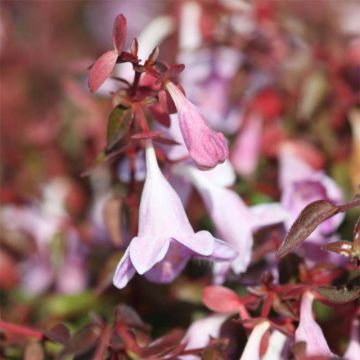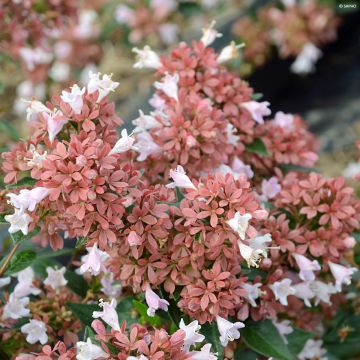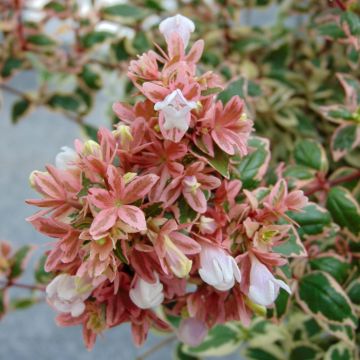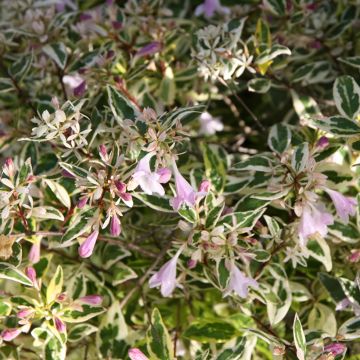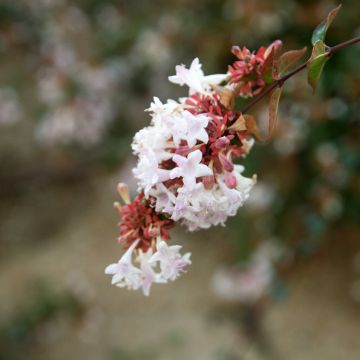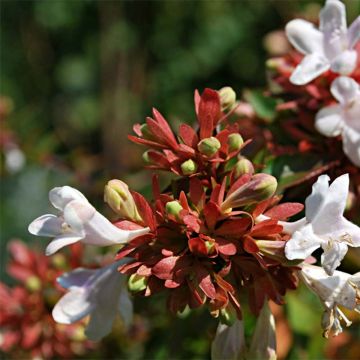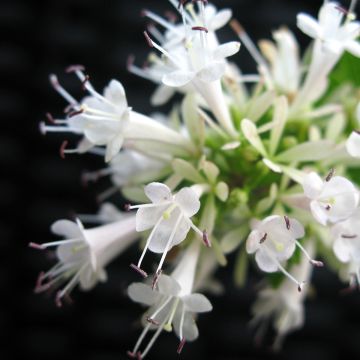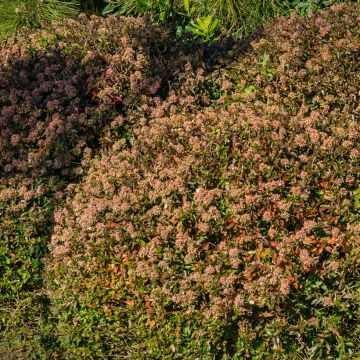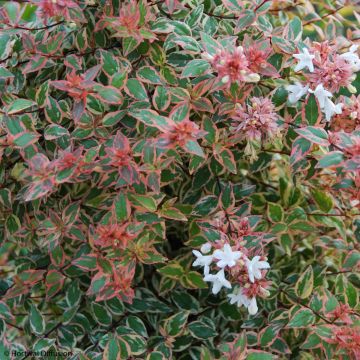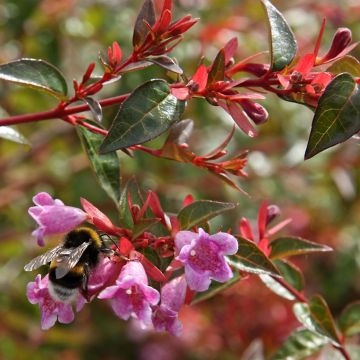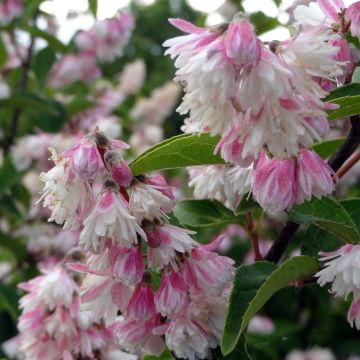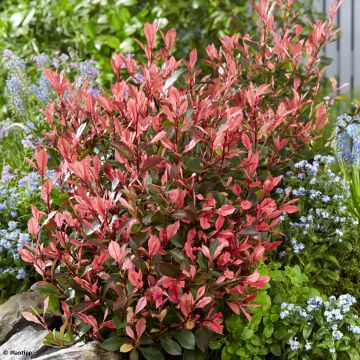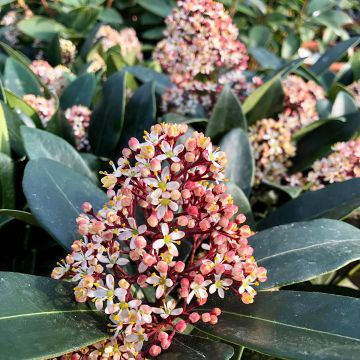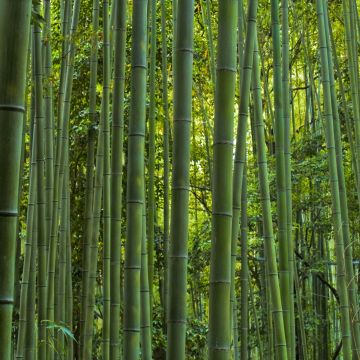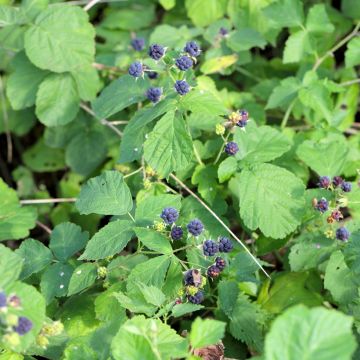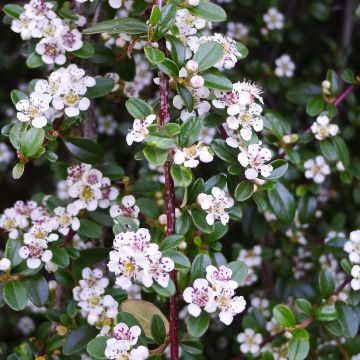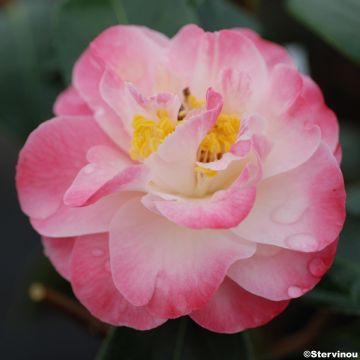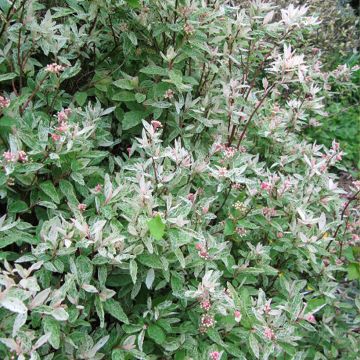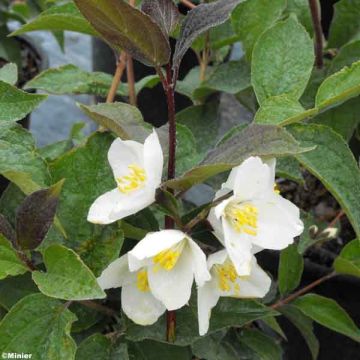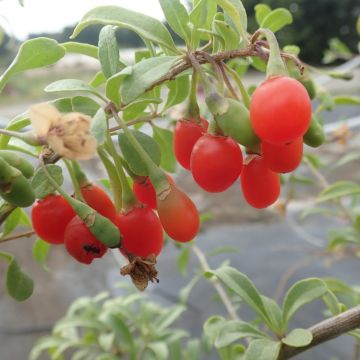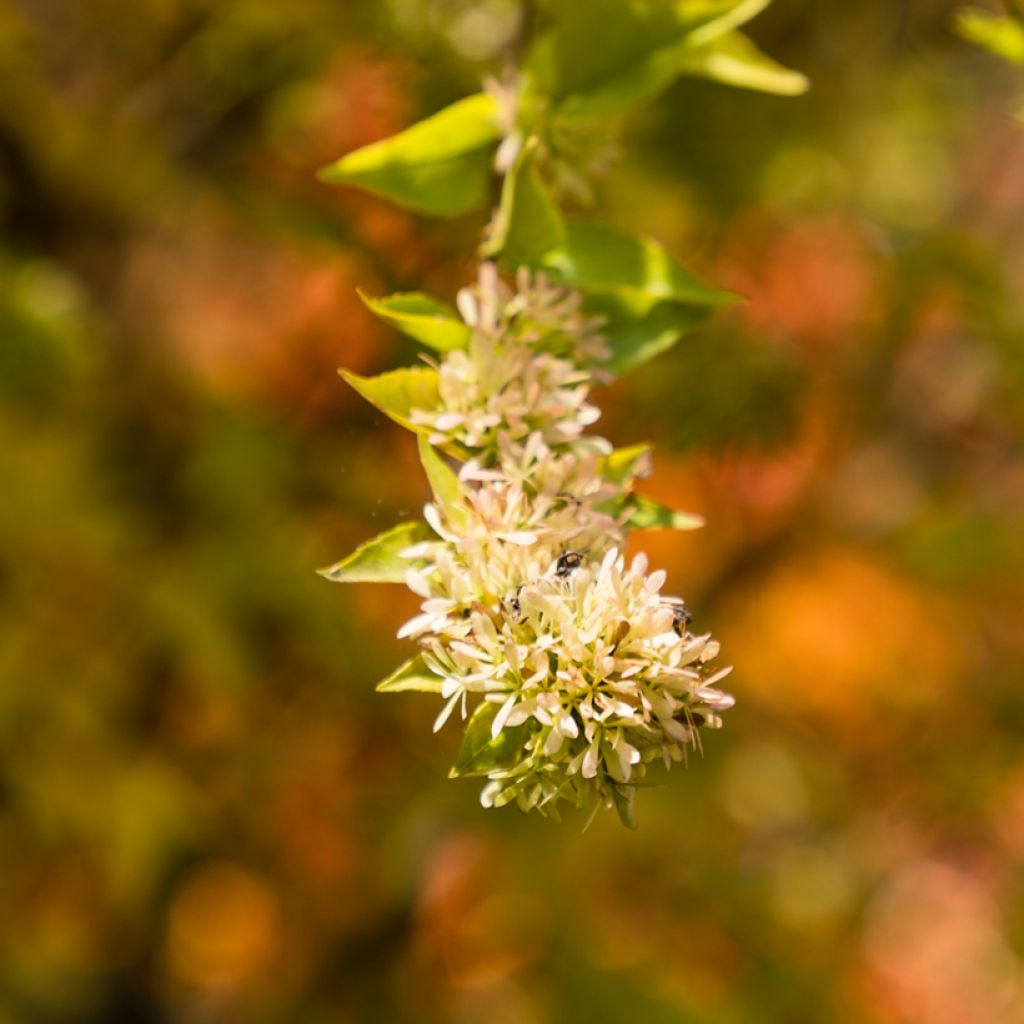

Abelia chinensis
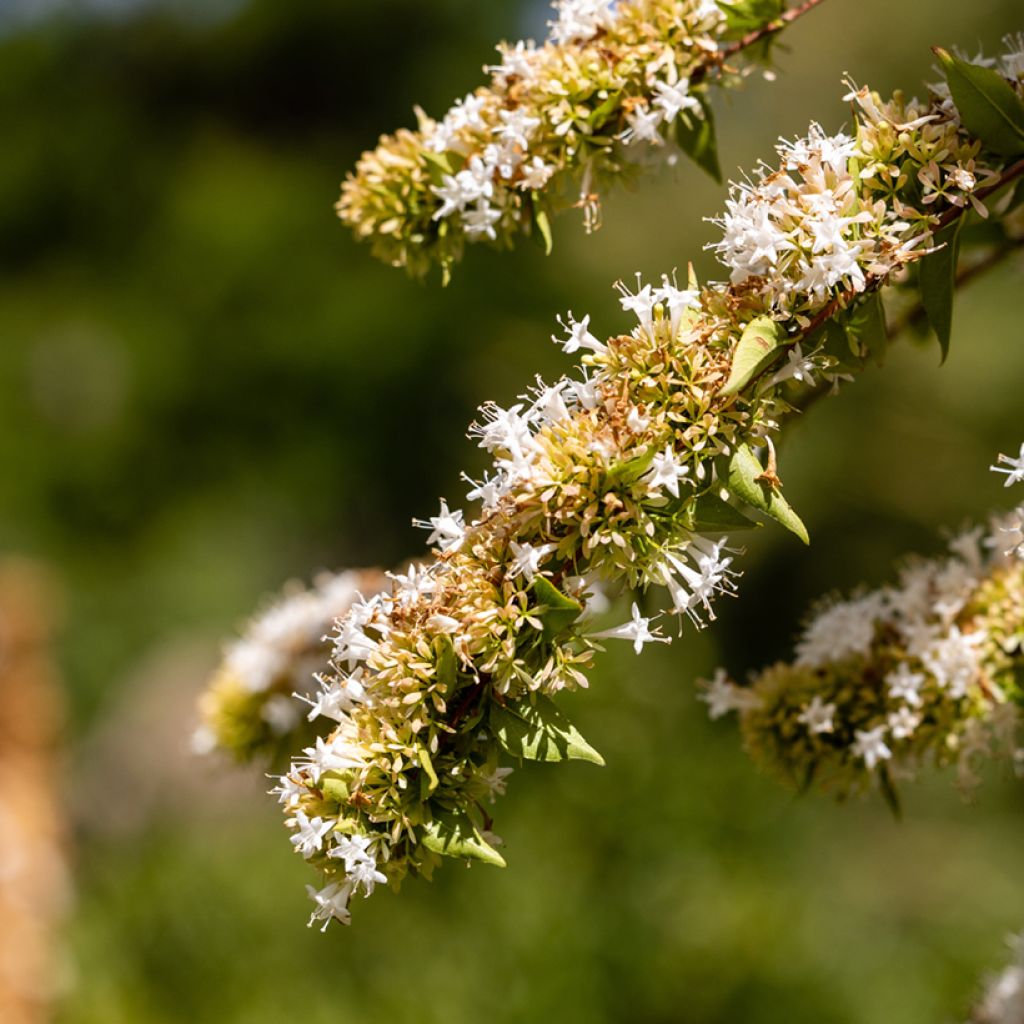

Abelia chinensis
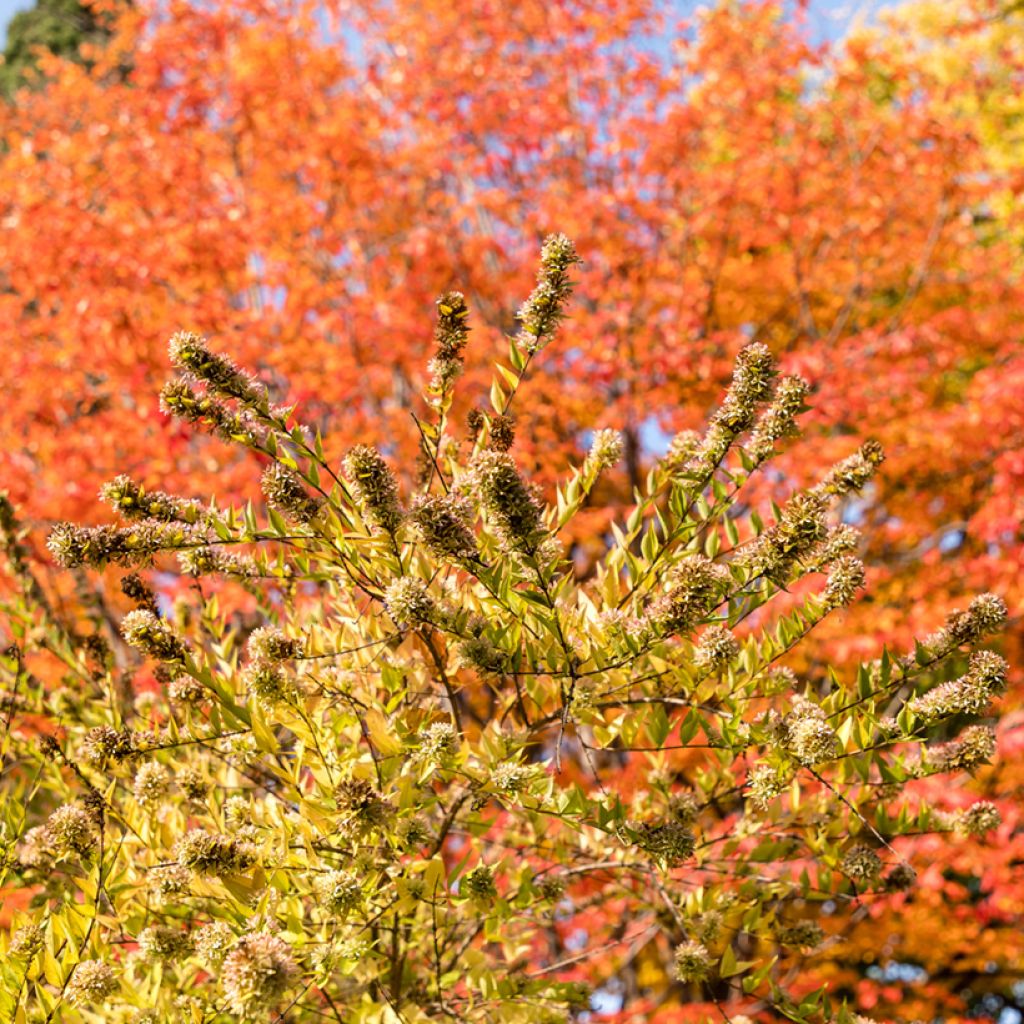

Abelia chinensis
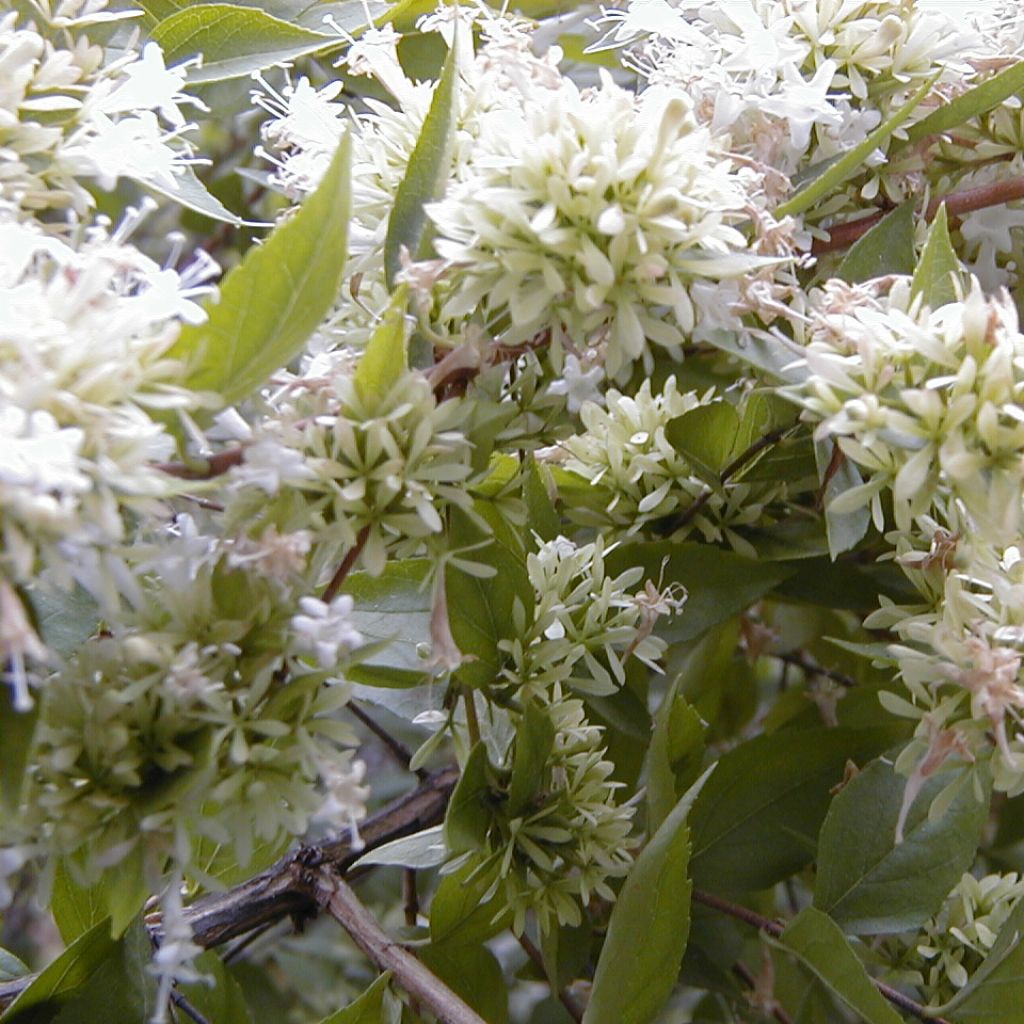

Abelia chinensis
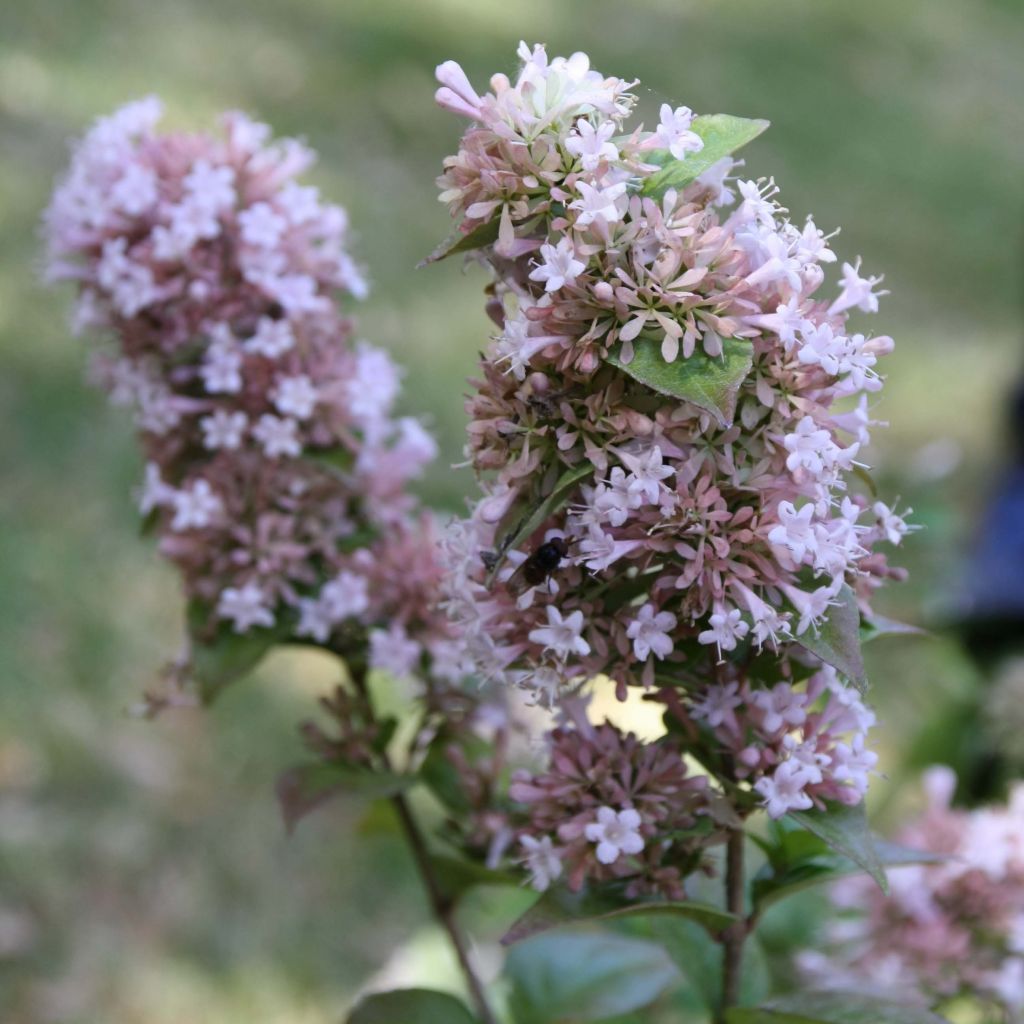

Abelia chinensis
Abelia chinensis
Abelia chinensis
Chinese Abelia
This item cannot be shipped to the selected country
Delivery charge from €5.90
More information
Schedule delivery date,
and select date in basket
This plant carries a 24 months recovery warranty
More information
We guarantee the quality of our plants for a full growing cycle, and will replace at our expense any plant that fails to recover under normal climatic and planting conditions.
From €5.90 for pickup delivery and €6.90 for home delivery
Express home delivery from €8.90.

Does this plant fit my garden?
Set up your Plantfit profile →
Description
The Chinese Abelia often reveals its presence through the fragrance of its countless small flowers, capable of scenting an entire garden in warm weather. It is a deciduous or semi-evergreen shrub, or even evergreen in mild climates, of modest appearance and accommodating temperament, but with great robustness and undeniable charm. It tirelessly blooms, from summer to frost, in a multitude of pure white flowers with matte pink calyxes that persist on the bush in autumn, alongside the small leaves that turn violet with bronze highlights. Hardy and drought-resistant, this abelia deserves a place in the garden, in a flowering hedge or in a grove, if only for the unforgettable fragrance of its flowering.
The Chinese Abelia, also known as Abelia rupestris, is a shrubby botanical species belonging to the caprifoliaceae family, just like honeysuckles or the Kolwitzia amabilis that resembles it. It is native to temperate regions of China, where it often grows in deciduous woods. Its habit is bushy and spreading, flexible and dense. Its growth rate is moderate, depending on the growing conditions. At maturity, this abelia will not exceed 2m (6.5ft) in all directions. Flowering occurs from July to October. The small tubular flowers, 2cm (0.8in) long, appear at the end of young branches, gathered in small panicles. The inside of the corolla is pure white, while the reverse is tinged with pink. Each flower is enclosed in a calyx of old rose colour that persists long after the flower has fallen. This flowering releases a powerful fragrance, a subtle blend of lilac, jasmine, and hyacinth, which attracts many pollinating insects. The reddish branches of the Chinese Abelia, bear small green and shiny leaves, opposite in pairs, entire, ovate in shape, with irregularly crenate edges. They take on pretty violet to bronze hues in autumn and persist throughout the winter, as long as the frosts are not too severe.
The Chinese Abelia is a highly floriferous and remarkably fragrant shrub that deserves a place in all gardens with relatively mild winters. While its hardiness does not exceed -12/-15°C (10.4 - 5°F) in well-drained soil, it tolerates all types of soils, even poor ones, and resists summer drought well. Its stout and dense, yet flexible habit allows it to be planted in a flowering hedge alongside buddleias, kolwitzia, mock oranges, lilacs, and other ceanothus, or in the middle of autumn flower beds, combined with asters, Japanese anemones, tricyrtis, etc. It also grows very well in a large pot, which can be placed on the terrace to scent summer evenings.
Report an error about the product description
Abelia chinensis in pictures
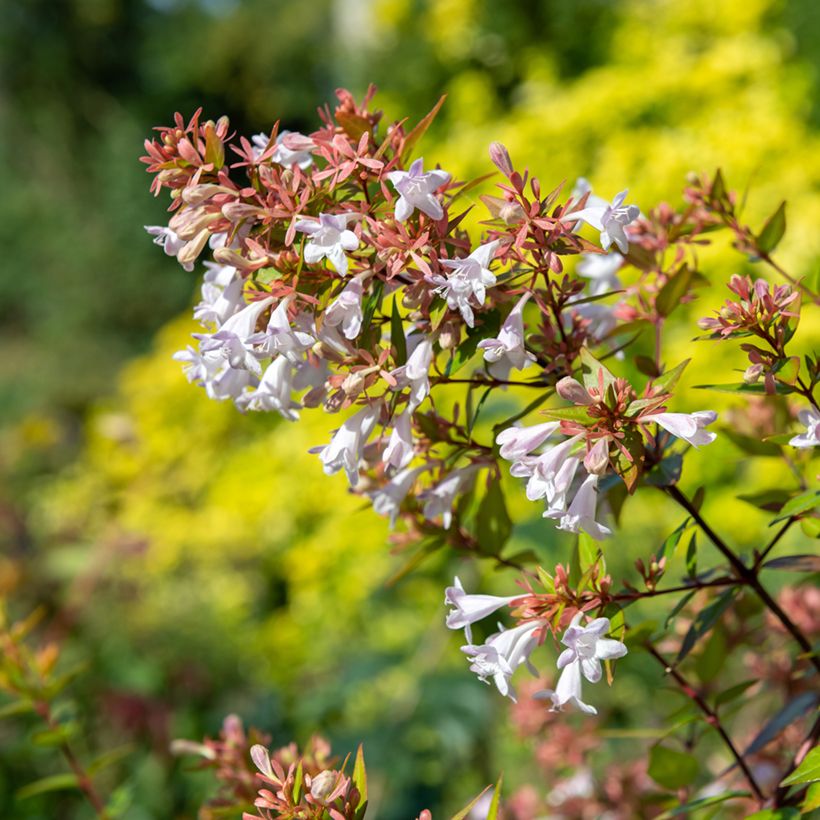

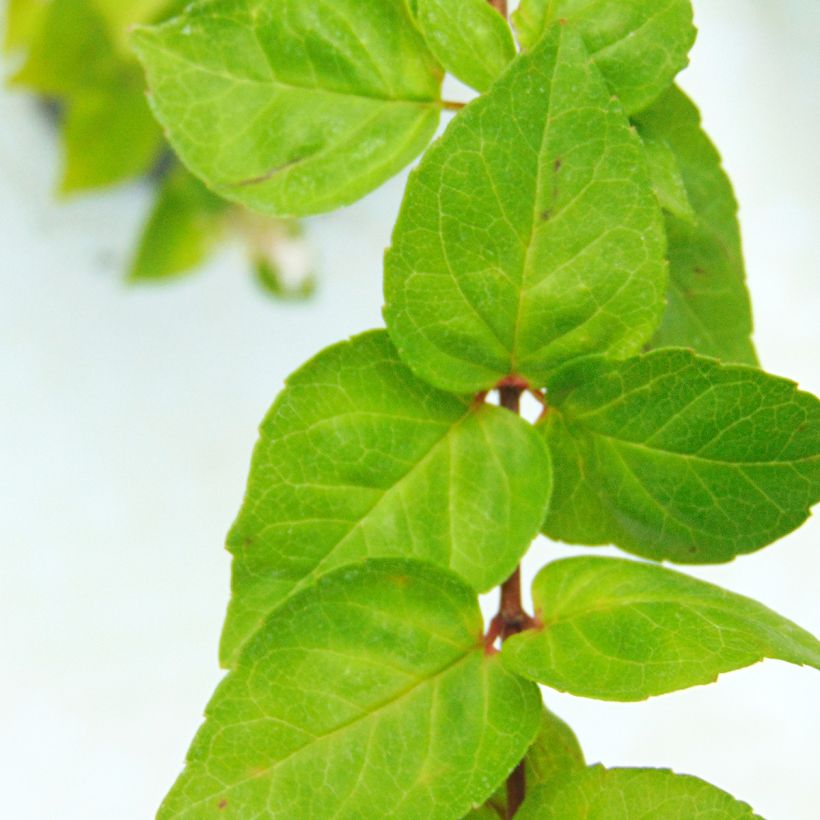

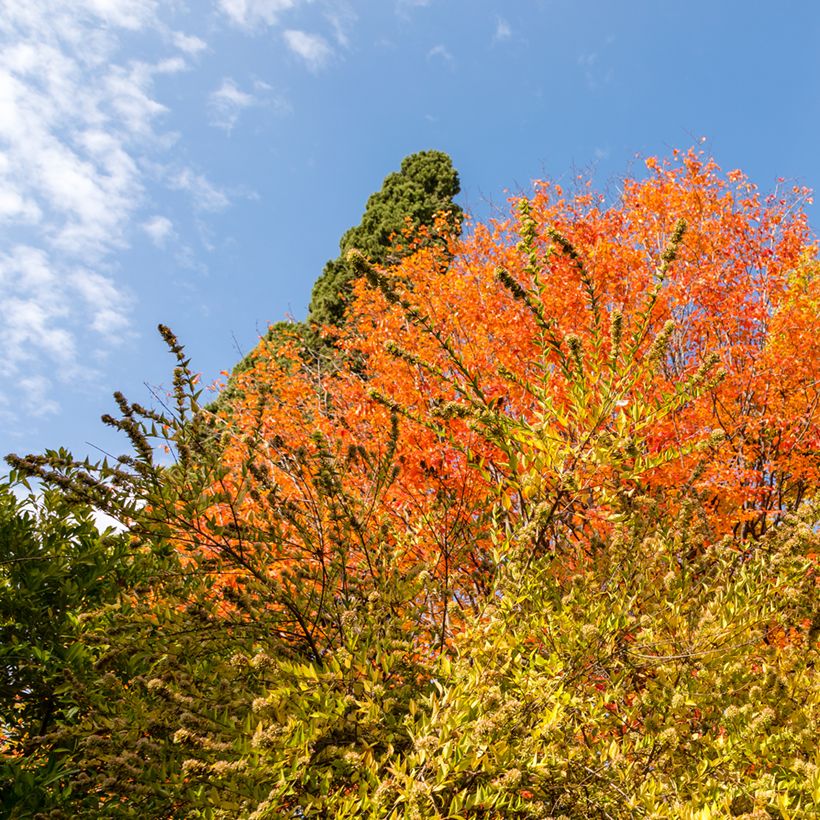

Plant habit
Flowering
Foliage
Botanical data
Abelia
chinensis
Caprifoliaceae
Chinese Abelia
China
Other Abelia
Planting and care
Abelia chinensis has good cold resistance, down to -12/-15°C (10.4/5°F), and grows in any good deep garden soil, even limestone. While it prefers soils that retain moisture, it tolerates occasional dry spells in summer once established in the garden for at least 3 years. To support flowering, water abundantly every 15 days if dry. It thrives in full sun, but also tolerates partial shade. It prunes very well, and can easily be kept at a height of 1.20m (4ft), although it can grow over 2.50m (8ft) tall and wide in fertile and moist soil!
Planting period
Intended location
Care
-
, onOrder confirmed
Reply from on Promesse de fleurs
Hedge shrubs
Haven't found what you were looking for?
Hardiness is the lowest winter temperature a plant can endure without suffering serious damage or even dying. However, hardiness is affected by location (a sheltered area, such as a patio), protection (winter cover) and soil type (hardiness is improved by well-drained soil).

Photo Sharing Terms & Conditions
In order to encourage gardeners to interact and share their experiences, Promesse de fleurs offers various media enabling content to be uploaded onto its Site - in particular via the ‘Photo sharing’ module.
The User agrees to refrain from:
- Posting any content that is illegal, prejudicial, insulting, racist, inciteful to hatred, revisionist, contrary to public decency, that infringes on privacy or on the privacy rights of third parties, in particular the publicity rights of persons and goods, intellectual property rights, or the right to privacy.
- Submitting content on behalf of a third party;
- Impersonate the identity of a third party and/or publish any personal information about a third party;
In general, the User undertakes to refrain from any unethical behaviour.
All Content (in particular text, comments, files, images, photos, videos, creative works, etc.), which may be subject to property or intellectual property rights, image or other private rights, shall remain the property of the User, subject to the limited rights granted by the terms of the licence granted by Promesse de fleurs as stated below. Users are at liberty to publish or not to publish such Content on the Site, notably via the ‘Photo Sharing’ facility, and accept that this Content shall be made public and freely accessible, notably on the Internet.
Users further acknowledge, undertake to have ,and guarantee that they hold all necessary rights and permissions to publish such material on the Site, in particular with regard to the legislation in force pertaining to any privacy, property, intellectual property, image, or contractual rights, or rights of any other nature. By publishing such Content on the Site, Users acknowledge accepting full liability as publishers of the Content within the meaning of the law, and grant Promesse de fleurs, free of charge, an inclusive, worldwide licence for the said Content for the entire duration of its publication, including all reproduction, representation, up/downloading, displaying, performing, transmission, and storage rights.
Users also grant permission for their name to be linked to the Content and accept that this link may not always be made available.
By engaging in posting material, Users consent to their Content becoming automatically accessible on the Internet, in particular on other sites and/or blogs and/or web pages of the Promesse de fleurs site, including in particular social pages and the Promesse de fleurs catalogue.
Users may secure the removal of entrusted content free of charge by issuing a simple request via our contact form.
The flowering period indicated on our website applies to countries and regions located in USDA zone 8 (France, the United Kingdom, Ireland, the Netherlands, etc.)
It will vary according to where you live:
- In zones 9 to 10 (Italy, Spain, Greece, etc.), flowering will occur about 2 to 4 weeks earlier.
- In zones 6 to 7 (Germany, Poland, Slovenia, and lower mountainous regions), flowering will be delayed by 2 to 3 weeks.
- In zone 5 (Central Europe, Scandinavia), blooming will be delayed by 3 to 5 weeks.
In temperate climates, pruning of spring-flowering shrubs (forsythia, spireas, etc.) should be done just after flowering.
Pruning of summer-flowering shrubs (Indian Lilac, Perovskia, etc.) can be done in winter or spring.
In cold regions as well as with frost-sensitive plants, avoid pruning too early when severe frosts may still occur.
The planting period indicated on our website applies to countries and regions located in USDA zone 8 (France, United Kingdom, Ireland, Netherlands).
It will vary according to where you live:
- In Mediterranean zones (Marseille, Madrid, Milan, etc.), autumn and winter are the best planting periods.
- In continental zones (Strasbourg, Munich, Vienna, etc.), delay planting by 2 to 3 weeks in spring and bring it forward by 2 to 4 weeks in autumn.
- In mountainous regions (the Alps, Pyrenees, Carpathians, etc.), it is best to plant in late spring (May-June) or late summer (August-September).
The harvesting period indicated on our website applies to countries and regions in USDA zone 8 (France, England, Ireland, the Netherlands).
In colder areas (Scandinavia, Poland, Austria...) fruit and vegetable harvests are likely to be delayed by 3-4 weeks.
In warmer areas (Italy, Spain, Greece, etc.), harvesting will probably take place earlier, depending on weather conditions.
The sowing periods indicated on our website apply to countries and regions within USDA Zone 8 (France, UK, Ireland, Netherlands).
In colder areas (Scandinavia, Poland, Austria...), delay any outdoor sowing by 3-4 weeks, or sow under glass.
In warmer climes (Italy, Spain, Greece, etc.), bring outdoor sowing forward by a few weeks.

































